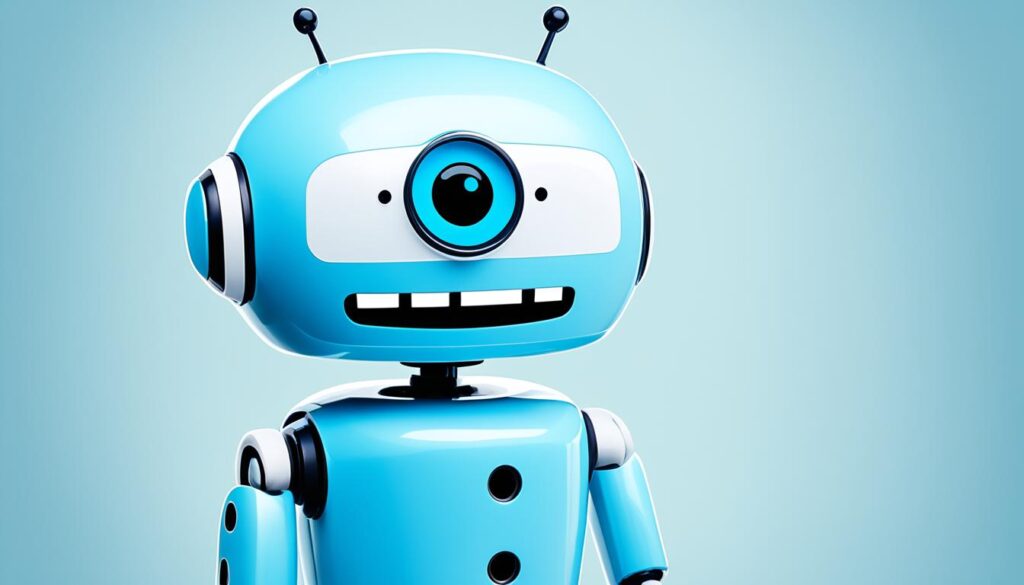In today’s digital landscape, businesses are constantly seeking innovative ways to improve customer experiences and streamline their operations. This has led to the rise of technologies like chatbots and conversational AI, which are revolutionizing customer engagement.
The chatbot market is projected to reach $9.4 million by 2024, highlighting the immense potential of this automated conversation tool. Chatbots simulate human conversations, providing real-time responses either through predefined flows or advanced AI and Natural Language Processing (NLP) algorithms.
On the other hand, conversational AI encompasses a broader range of AI-driven communication technologies, including chatbots and virtual assistants. These platforms leverage data, machine learning, and NLP to recognize and respond to vocal and text inputs, creating human-like conversational experiences.
So, what are the key differences between chatbots and conversational AI? Let’s explore the unique features and functionalities of each, and understand how they can transform customer engagement through automated conversations.
What is a Chatbot?
Chatbots are computer programs designed to enhance customer experiences in the realm of customer service. These automated conversational agents serve as self-service tools, providing a layer of support between businesses and their customers.
There are two main types of chatbots: rule-based chatbots and AI chatbots. Rule-based chatbots operate on pre-set rules and provide responses based on specific keywords or phrases. They are commonly used to answer frequently asked questions (FAQs) and address basic customer issues. On the other hand, AI chatbots, also known as contextual chatbots or virtual agents, leverage advanced technologies like machine learning and natural language processing (NLP) to understand user intent and deliver more intelligent and personalized responses over time.

Implementing chatbots in customer service can bring significant benefits, saving valuable time for customer service teams. According to research, businesses that handle 20,000 support requests per month can potentially save over 240 hours per month by utilizing chatbots as a self-service support option.
Rule-based chatbots and AI chatbots have their own unique advantages. Rule-based chatbots are ideal for addressing FAQs and basic customer issues, providing quick and straightforward answers. On the other hand, AI chatbots offer more advanced capabilities, leveraging machine learning and NLP to understand user intent and provide personalized responses. These AI-powered chatbots continuously improve their performance over time, making them excellent tools for enhancing customer experiences.
Benefits of Rule-based Chatbots:
- Quickly answer FAQs
- Address basic customer issues
- Provide straightforward responses
Benefits of AI Chatbots:
- Understand user intent
- Deliver intelligent and personalized responses
- Continuously improve performance over time
Both types of chatbots contribute to automating conversations with customers, reducing wait times, and freeing up customer service representatives to focus on more complex issues. By implementing chatbots, businesses can enhance customer service and improve overall efficiency.
| Chatbot Type | Main Features |
|---|---|
| Rule-based Chatbot | Operates on pre-set rules Provides responses based on keywords or phrases Quickly addresses FAQs and basic customer issues |
| AI Chatbot | Utilizes machine learning and NLP Understands user intent Delivers personalized and intelligent responses Improves performance over time |
What is Conversational AI?
Conversational AI refers to AI-driven communication technology that includes chatbots and virtual assistants like Siri and Alexa. These advanced systems employ data, machine learning, and natural language processing (NLP) to recognize and respond to both speech and text inputs, creating interactions that closely mimic human conversations.
Conversational AI platforms leverage speech recognition and NLP to understand user queries, enabling virtual assistants to provide accurate and context-aware responses. By analyzing and interpreting human language, these AI-driven systems can deliver personalized and tailored experiences.
With the rapid advancements in conversational AI, virtual assistants have become an integral part of our daily lives. They can perform various tasks such as setting reminders, providing weather updates, playing music, and even controlling smart home devices.
One of the key strengths of conversational AI is its ability to understand and respond to natural language. Instead of relying on rigid commands or predefined flows like traditional chatbots, conversational AI systems can interpret user intent and generate more meaningful and human-like responses.
The potential of conversational AI goes beyond just voice interactions. It can also facilitate text-based conversations through messaging platforms and chat interfaces, offering seamless and convenient communication.
“Conversational AI platforms leverage data, machine learning, and NLP to recognize and respond to speech and text inputs, mimicking human interactions and facilitating conversational flow.”
As conversational AI technology continues to evolve, its applications are expanding across industries. From customer service and support to virtual personal assistants, these AI-driven communication systems are transforming the way we interact with technology.
Conversational AI technology is projected to drive approximately $12 billion in retail revenue by 2023.

Advantages of Conversational AI:
- Enhanced customer experiences through personalized and context-aware interactions.
- Improved efficiency by automating routine tasks and inquiries.
- Increased productivity by freeing up human agents to focus on complex issues.
- 24/7 availability, providing instant support to customers.
- Scalability, allowing businesses to handle a large volume of customer inquiries simultaneously.
Conversational AI is driving a new era of communication technology, empowering businesses to deliver exceptional customer experiences and streamline operations.
Chatbots vs Conversational AI: Examples in Customer Service
Chatbots and conversational AI are invaluable tools for delivering efficient customer support. Many companies have integrated automated messaging technology into their customer service strategies to quickly address and resolve customer inquiries. Let’s explore a couple of examples:
Domino’s Pizza
Domino’s Pizza has implemented a chatbot named Dom to enhance the customer ordering experience. With Dom, customers can easily place their orders, track delivery times, and even seek assistance from a human representative if needed. This automated messaging technology streamlines the ordering process, reducing wait times and ensuring a smooth customer experience.
Bank of America
Bank of America has leveraged conversational AI to develop a virtual financial assistant named Erica. Erica assists customers by providing personalized financial insights, sending bill reminders, and offering account information. By utilizing conversational AI, Bank of America can deliver a high level of customer service, catering to individual needs and queries.
These real-world examples highlight how chatbots and conversational AI improve customer engagement and streamline interactions. By reducing wait times and addressing inquiries promptly, businesses can enhance customer satisfaction and enable live agents to focus on more complex issues.

| Company | Chatbot | Functionality |
|---|---|---|
| Domino’s Pizza | Dom | Order placement, delivery tracking, customer support |
| Bank of America | Erica | Personalized financial insights, bill reminders, account information |
Chatbots in Customer Service IRL
Chatbots are revolutionizing customer service in various industries, providing businesses of all sizes with invaluable benefits. Let’s explore some real-world examples of how chatbots are transforming customer support, saving time and resources.
Case Study 1: Zendesk
Zendesk’s chatbot technology has enabled companies to achieve remarkable cost savings and efficiency improvements. By automating customer support processes, businesses using Zendesk’s chatbot have saved over 240 hours per month in support time. This allows their support teams to focus on more complex interactions and provide personalized assistance to customers.
Case Study 2: Domino’s Pizza
Domino’s Pizza successfully implemented a chatbot to enhance their ordering and delivery tracking processes. The chatbot, integrated into their website and mobile app, allows customers to conveniently place orders, track delivery times, and receive real-time updates. This streamlined approach has not only improved customer satisfaction but also reduced dependency on human support agents, resulting in significant cost savings.
Case Study 3: HelloFresh’s bot, Freddy
HelloFresh, a leading meal kit delivery service, introduced a chatbot named Freddy to improve their customer support operations. Freddy has proven to be a reliable and efficient assistant, reducing reply times and increasing customer satisfaction. By leveraging automated conversations, HelloFresh has optimized their support system and achieved higher levels of customer engagement.
Case Study 4: Ask Benji
Ask Benji is a chatbot specifically designed to assist Arizona students with their financial aid processes. This chatbot provides students with essential information, answers to frequently asked questions, and step-by-step guidance, simplifying a typically complex process. With Ask Benji’s valuable support, students can navigate the financial aid journey successfully, saving time and ensuring they receive the assistance they need.
| Company | Industry | Use Case |
|---|---|---|
| Zendesk | Customer Support Software | Automating support processes and achieving cost savings of over 240 hours per month |
| Domino’s Pizza | Food Delivery | Enhancing ordering and delivery tracking with a chatbot, resulting in improved customer satisfaction and cost savings |
| HelloFresh | Meal Kit Delivery | Implementing a chatbot to improve reply times, increase customer satisfaction, and optimize support operations |
| Ask Benji | Education | Assisting students with financial aid processes through a chatbot, simplifying and streamlining the journey |
These case studies demonstrate the significant impact chatbots have on streamlining customer service and generating cost savings across various industries. By leveraging automated conversations, businesses can provide efficient and personalized support, leading to improved customer experiences and increased efficiency.
Conversational AI in Customer Service IRL
Conversational AI is revolutionizing customer service in various industries, providing businesses with the ability to deliver personalized and context-aware experiences. Leading organizations such as Bank of America, Edwardian Hotel, and Amtrak are leveraging conversational AI technology to enhance customer interactions and improve overall satisfaction.
Bank of America: Virtual Financial Assistant “Erica”
In the realm of finance, Bank of America’s virtual financial assistant, Erica, stands out as a prime example of conversational AI in action. Erica goes beyond providing standard banking information by offering proactive insights and reminders, allowing customers to resolve problems more efficiently and effectively. By leveraging conversational AI, Bank of America aims to deliver personalized experiences and elevate customer service to new heights.
Edwardian Hotel: Virtual Host “Edward”
Edwardian Hotel utilizes conversational AI through their virtual host named Edward, who caters to guests’ needs by providing personalized recommendations and streamlining payment processes via SMS. Edward’s ability to understand guest preferences and offer tailored assistance enhances the overall hotel experience, showcasing the power of conversational AI in providing exceptional customer service.
Amtrak: Virtual Travel Assistant “Julie”
Amtrak, a renowned rail travel provider, utilizes conversational AI with their virtual travel assistant named Julie. Julie enables users to seamlessly book rail travel, complete necessary forms, and access booking information through natural and intuitive conversation. This level of personalization and ease of use enhances the customer experience and demonstrates the potential impact of conversational AI in the travel industry.
These real-world examples highlight the significance of conversational AI in driving exceptional customer service experiences. By leveraging virtual assistants and personalized interactions, businesses can create memorable journeys for their customers, leading to increased satisfaction, loyalty, and revenue generation.
| Business | Conversational AI Implementation | Benefits |
|---|---|---|
| Bank of America | Virtual financial assistant “Erica” offers proactive insights and reminders | – Improved problem-resolution speed – Personalized experiences |
| Edwardian Hotel | Virtual host “Edward” provides personalized recommendations and processes payments through SMS | – Enhanced guest experience – Streamlined payment processes |
| Amtrak | Virtual travel assistant “Julie” enables users to book rail travel, complete forms, and access booking information | – Seamless booking process – Intuitive and natural conversation |
Conversational AI is the New Customer Service Norm
Conversational AI is rapidly becoming the norm in customer service. Businesses are increasingly adopting automation and conversational interfaces, with 52% of companies citing COVID-19 as a driving factor. According to PwC, 86% of organizations view AI as mainstream technology within their operations. To stay competitive, your business must embrace AI technology, including conversational AI, to improve your contact and call centers. Implementing AI chatbots, such as Zendesk’s Answer Bot, can enhance the customer experience and keep your business ahead of the curve.
With conversational AI, you can automate routine customer interactions, freeing up your customer service team to focus on more complex issues and providing efficient service to your customers. Conversational AI-powered chatbots not only provide immediate responses to customer inquiries but also learn from their interactions, continuously improving their accuracy and relevance. By adopting conversational AI, you can streamline customer service, reduce costs, and gain a competitive advantage in your industry.

Using conversational AI in your customer service strategy allows you to deliver personalized and context-aware customer experiences. Chatbots powered by conversational AI can understand natural language, recognize user intent, and provide relevant and accurate responses. They can assist customers with tasks, provide product recommendations, and resolve issues promptly, all while delivering a human-like conversational experience.
By leveraging conversational AI, you can revolutionize your customer service operations and exceed customer expectations. Studies have shown that businesses that adopt conversational AI technology experience higher customer satisfaction rates, increased efficiency, and improved customer loyalty.
Benefits of Conversational AI in Customer Service
- 24/7 availability: Conversational AI-powered chatbots can provide round-the-clock support, ensuring that your customers can reach your business whenever they need assistance.
- Improved response times: Chatbots can instantly respond to customer inquiries, eliminating long wait times and improving customer satisfaction.
- Reduced costs: By automating routine tasks, conversational AI can significantly reduce the workload on your customer service team, resulting in cost savings for your business.
- Personalized experiences: Conversational AI allows you to tailor interactions based on customer preferences and past behavior, providing personalized recommendations and solutions.
Embracing conversational AI in your customer service strategy is no longer an option but a necessity. As the adoption of AI continues to grow, businesses that fail to implement conversational AI risk falling behind their competitors. By investing in conversational AI technology and leveraging its capabilities, you can gain a competitive advantage, enhance customer satisfaction, and drive business growth.
Conclusion
In conclusion, when it comes to customer engagement and automated conversations, both chatbots and conversational AI have their unique advantages. Chatbots excel at simulating human conversations and providing self-service support, making them ideal for addressing basic customer issues and frequently asked questions. On the other hand, conversational AI encompasses AI-driven communication technologies that mimic human interactions, enabling machines to understand and respond to human language in a more intelligent and context-aware manner.
One key difference between chatbots and conversational AI lies in their capabilities. Chatbots can be either rule-based or AI-based, with AI-based chatbots leveraging machine learning and natural language processing (NLP) to continually improve their responses over time. Meanwhile, conversational AI platforms use data, machine learning, and NLP to create human-like conversational experiences, allowing for more personalized and nuanced interactions.
Embracing chatbots and conversational AI can be transformative for businesses, as they enable streamlined customer engagement and automated conversations. By implementing these technologies, companies can improve customer experiences, reduce service costs, and increase efficiency in their customer service operations. Whether it’s leveraging chatbots for self-service support or harnessing the power of conversational AI for more intelligent interactions, businesses can leverage these tools to gain a competitive edge in today’s evolving digital landscape.
